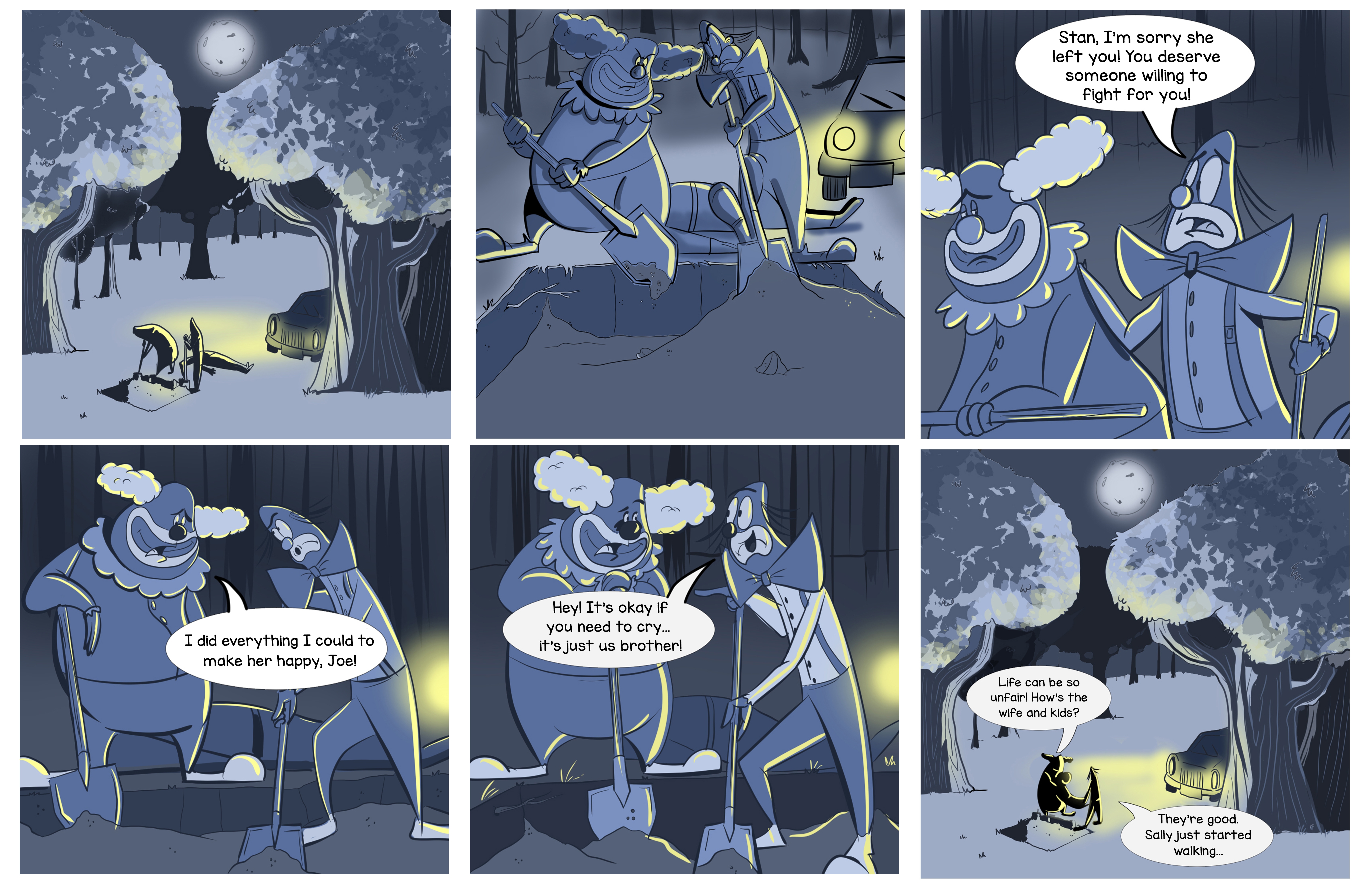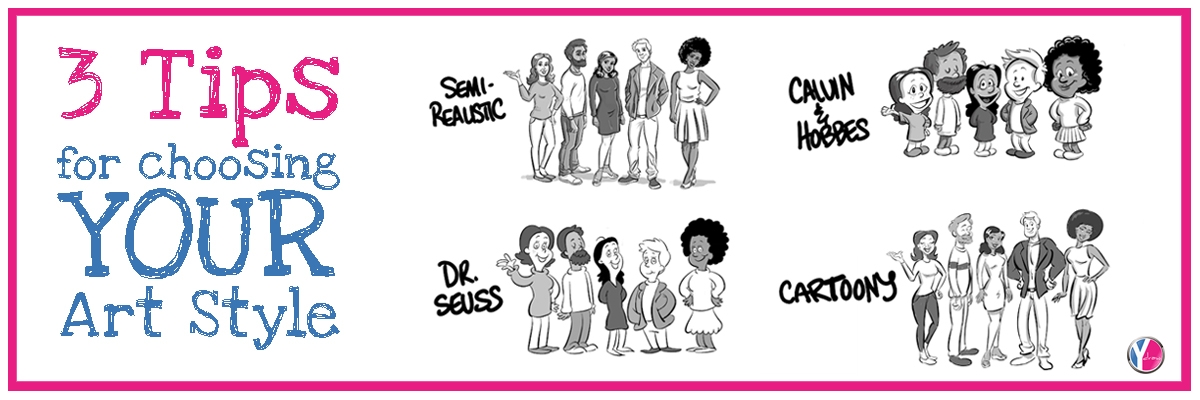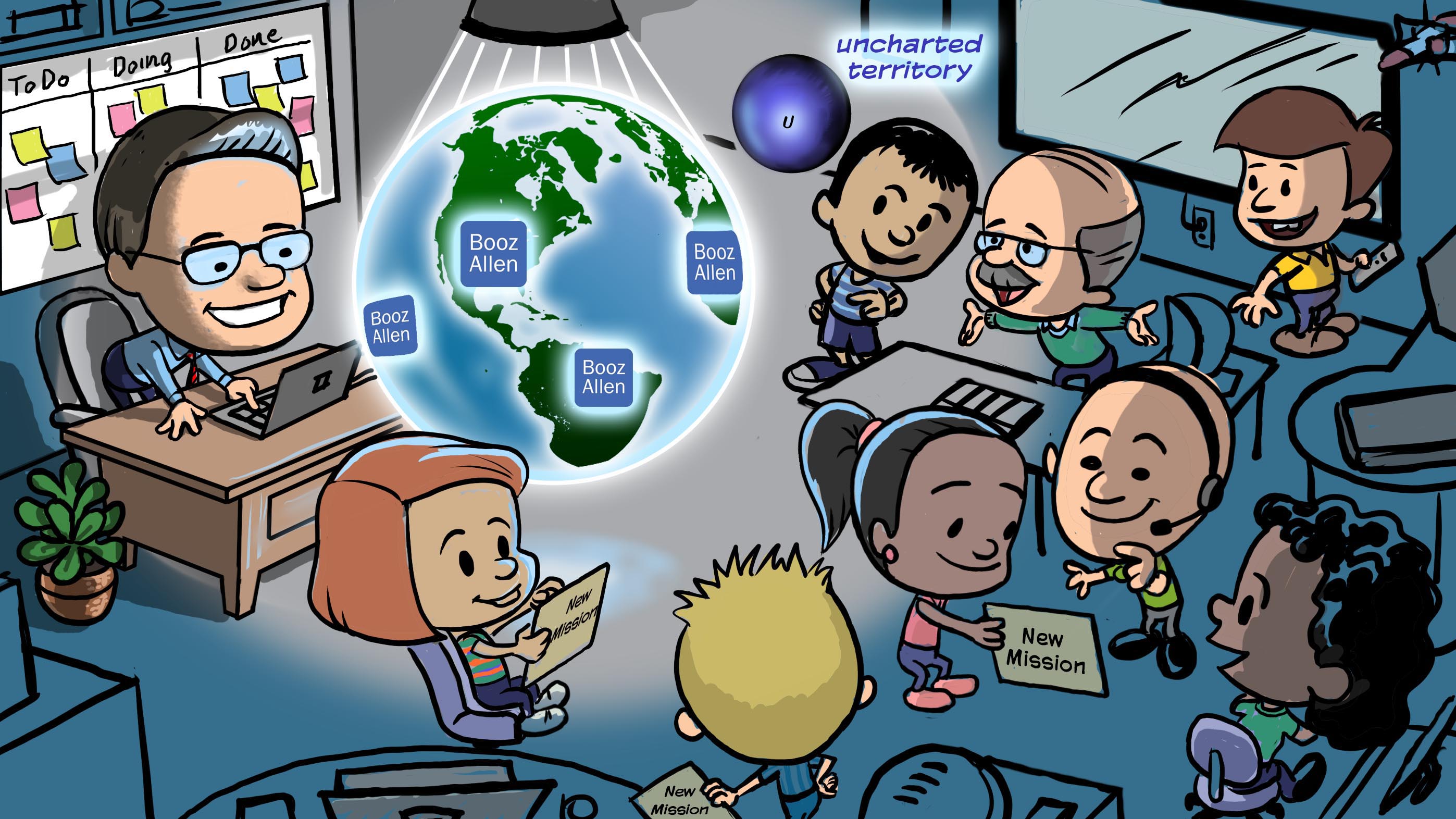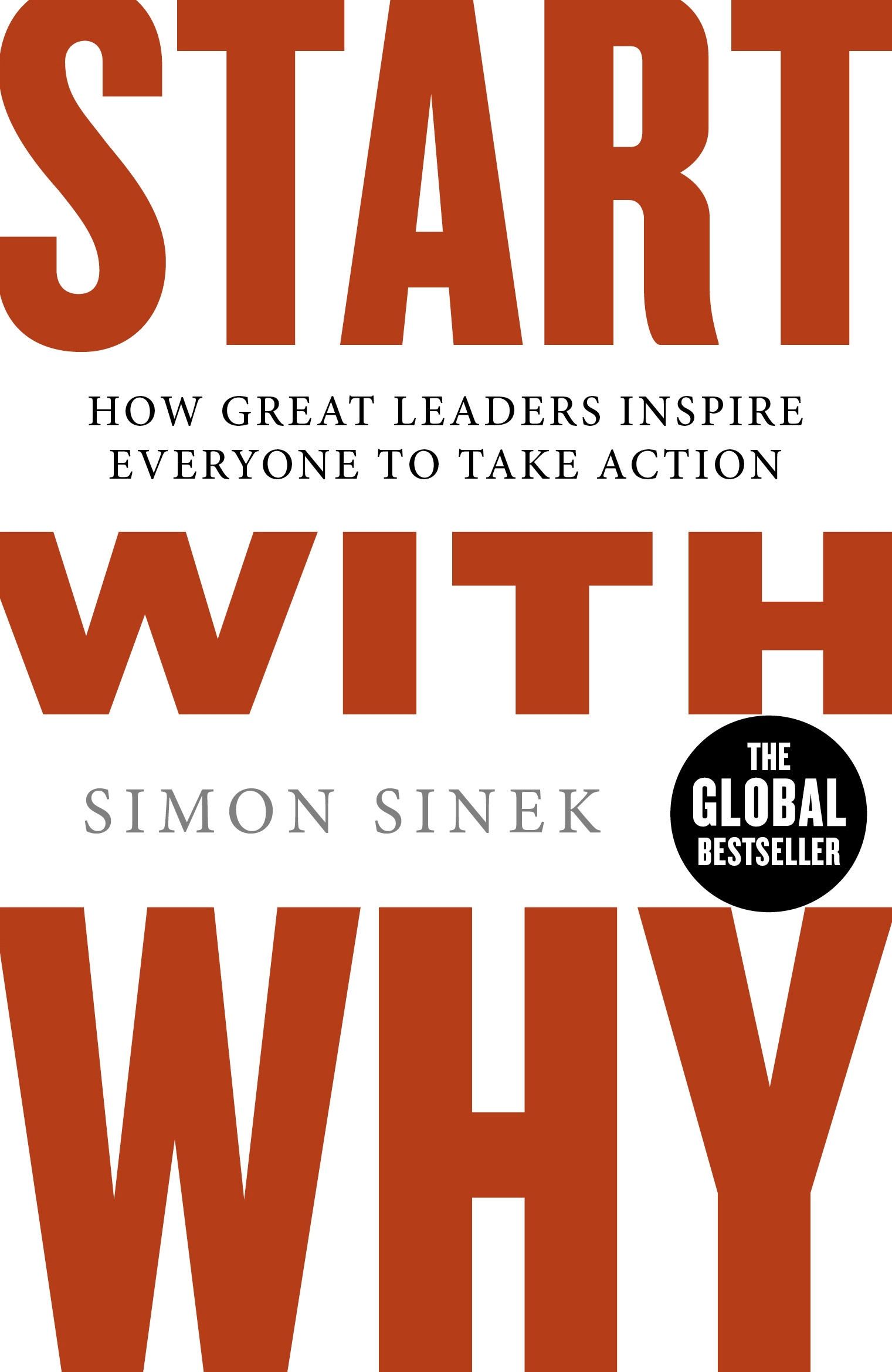by Ydraw | Nov 29, 2018 | animated explainer video, Animated Whiteboard Videos, Explainer Video, explanation animation, Marketing, Story Telling, video, Video Content, Video Marketing, Video Strategy Guide, video style, Voice Over, Whiteboard animation, Whiteboard Video, Writing a Script
What Is Tone and Mood and Why Do They Matter to Your Video?
By Erica Schmidt Jabali
According to a Harvard professor, at least 95% of purchasing decisions are made subconsciously – or based on how we feel. We could be influenced by a brand’s commercial, their marketing, brand packaging, and more.
This means simply giving the facts and figures in your video isn’t enough – you have to strike an emotional chord with your target consumer in order to motivate them to act. (read more here)
This is one reason why we ask in our questionnaire and on our kick-off calls what tone and mood you want in your video.
And, we are usually met with crickets on the other end of the line.
Turns out, for those of us who haven’t been in high school English classes for a long time (okay, a really long time), we might need a little brushing up on our tone and mood skills.
Don’t worry – we got you.
So, sharpen your pencils and sit up straight – because your speed-round refresher course on Tone vs. Mood starts now:
TONE:
Tone is the author’s attitude towards the subject. Remember when your mom used to say, “Don’t you take that tone with me!” Well, she wasn’t wrong – the tone we use in our speech is similar to the tone a piece of writing or voiceover in a video takes.
Here are some examples of videos that use a different tone:
In this video, the client wanted a confident, inspirational, educational tone:
Whereas in this video, the client asked for a relaxed, fun, beachy vibe, so our fan-favorite, chameleon of a voiceover talent, Dawson, actually used a surfer accent to achieve this goal
In this video, we wanted to replicate that infamous movie trailer voice to give it that movie trailer tone:
So, in short, tone is the inflections used by the voiceover in order to communicate how they feel about the subject.
Our VO talents are pros at taking a script and inferring the tone that it is trying to convey.
WHY THIS MATTERS:
You know your target customer better than anyone. You know what they like and don’t like. You know what their interests are, maybe their demographics, and even their buying patterns.
So, how do you think this person wants to be talked to?
Do they want that warm, motherly tone that says, “I’m here for you…”? It might end up sounding a little bit like this:
Do you want a fast-talking, witty, lightning speed commentary like this one?
The tone you choose for your video should be directly related to how your target consumer wants to be talked to.
So, when deciding the tone for your video, consider the following questions:
- What prior marketing campaigns have been the most successful and what tone did they take?
- What type of tone will your target consumer be most responsive to?
- What tone will best represent your vision for your business and how you want to be perceived?
Try to think of three key words to describe this tone.
Excellent. Now that you have your tone figured out, let’s move on to mood:
MOOD:
This is how the viewer will feel after watching your video.
For example, this client focuses on food kits for emergencies:
How did this video make you feel? That’s the mood of the video.
Our goal was to create a feeling of urgency, to make you feel that you need this product in order to be prepared and protect your family.
You need to think about the mood because you want to have that target in mind when writing your video.
For example, if you want your viewer to feel emotionally moved and compelled to act, then you’ll want to write the video with that goal in mind – and anything that does not compliment this mission has to be cut.
Sometimes, it can be painful to make cuts or reduce a video script to get it to a certain time – but if you think about all of your choices through the lens of – what will make my target consumer feel [x, y, z] – then it becomes much easier.
Since we know that people make most of their purchasing decisions based on how the branding or marketing makes them feel- then selecting the most appropriate tone and mood for your video becomes imperative.
WRAP IT UP:
- The tone is the author’s attitude in the video and the tone of the VO and the script writing will communicate this
- The tone creates the mood that your viewer will feel
- With most purchasing decision made based on emotions – how you make your viewer feel is very important
- Consider your target tone and mood carefully when preparing for your kick-off call!
There you have it. Everything you needed to know about tone and mood.
We hope this helps as you prepare for the scripting process. We’re here to help and hope to make the process as easy on you as possible.
Please reach out with any questions. We can’t wait to work with you!
by Ydraw | Sep 18, 2018 | Creative Marketing, how to make a whiteboard animation, Simple marketing, Story Telling, Video Content, Video Marketing, Video Strategy Guide, Whiteboard animation, Whiteboard Video, Writing a Script, Ydraw
Here at Ydraw, we work with amazing people every day, from all over the world, to create awesome videos.
Our completely custom videos are perfect for companies, because we can create EXACTLY what they need. From the scripting, to the choice of art style, to your voiceover selection, to our custom music composer, everything is tailored to our customer’s needs.
Since each video is entirely unique, it requires both parties to be equally invested and provide timely feedback. COLLABORATION IS KEY! This can be both a blessing and a curse.
One of the biggest challenges we run into when creating videos is understanding each parties’ roles in the project. We rely on the client to provide the information needed for us to understand their product or service, and in return, ask our clients to trust us when it comes to creating the best content for them.
Sometimes clients will focus in on one minor detail that has little or no impact on the overall messaging of the video, and can eventually lead to an experience or end product that isn’t so spectacular.
For instance, have you ever looked at a word so many times that you convince yourself it’s spelled wrong? The more your stare at it, the weirder it looks… even though it was right from the beginning. This can happen when creating content.
When creating videos, we notice this problem in the artwork phase. For example, a client will get so hung up on the color of “Mary’s shirt”, and before you know it, they’ve convinced themselves that their ENTIRE video is a failure, because absolutely NO ONE is going to understand or even watch the video, if her shirt is red, and NOT blue…

Sounds dramatic… but we see examples like this happen with our clients often.
We completely understand that these projects, these videos, are as important as your first born child! You have a lot of pressure to produce an amazing product, but it’s imperative to remember to step back and focus on the overall message of your video.
So if the color of Mary’s shirt isn’t the most important part to creating a successful video… then what is?
The message!
First, you want to establish your message. Keep it clear and concise! Second, ensure that your content helps to portray that message.
Don’t know where to start? The good news is that Ydraw can do it all for you!
(and don’t worry.. if you want Mary’s shirt to be blue, we’ll make sure it’s the prettiest blue you’ve ever seen.)
by Ydraw | Aug 27, 2018 | Creative Marketing, Emotional Connection, Explainer Video, how to make a whiteboard animation, Marketing, Memory, Simple marketing, Story Telling, video, Video Content, Video Marketing, video online marketing, Video Strategy Guide, Whiteboard animation, Whiteboard Video, Writing a Script, Ydraw

“Hello, my name is Mr. Important the CEO of Important Products… but the true important person is you!”
Uh wrong… Can you believe this guy?
He has officially lost us within the first line.
Code #282: If you want your audience to believe your product is important… focus on them and their needs, not on yourself.
This code is very important when creating successful content.
Don’t be Mr. Important.
by Ydraw | Jul 18, 2018 | animated doodle videos, animated doodle videos, animated explainer video, Animated Whiteboard Videos, animation, Animation Production, Animation Video, Authenticity, Creative Marketing, Emotional Connection, how to make a whiteboard animation, Humor, Marketing, Story Telling, Video Content, Video Marketing, video online marketing, Whiteboard animation, Whiteboard Video, Ydraw
What makes things funny? Our own sense of humor isn’t always funny to the guy sitting next to us. So, let’s look at a few simple principles used in Improv to make your video funny to all of your audience!
First and foremost, there is TRUTH in COMEDY! The funny comes from the experiences we have all had in our lives. Think about sitcoms, why do they work? They take something so simple, like everyday life and exploit it. The ups and downs of dating and heartbreak or fighting for that perfect job, only to find out that it isn’t so perfect. But where does the comedy come from?
The funny comes from the unexpected. The moments of truth. It comes from showing not telling. We have all been there…the time in the grocery store when two people are having a conversation in public and you can’t help but listen, even though you know the topic should have probably been left at home…yeah that stuff.
So let’s take a look at this funny scenario….
We see two shadowy figures digging holes in a graveyard. It’s dark, but we can see that there’s a body behind them. It appears that they are covering up a murder! The scene is quite grim and creepy… so how is this funny? The car lights flicker on and we get a better look of the situation… only to reveal…two clowns? Okay, now this is way more terrifying, but their must be more to the story… so as we get closer, we overhear…
Clown 1:“Look Stan, all I’m saying is I’m sorry she left you. You deserve better!”
Clown 2:“You know Joe I just don’t understand, I did everything I could to make her happy.”
Clown 1:“Hey, you know, it’s okay if you want to cry. It’s just us brother.”
Clown 2: (in tears) “Life is just so unfair! But hey how’s the wife and kids?”
Clown 1: “They’re real good. Sally just started walking…”

The conversation continues as they are digging a shallow grave wearing their clown costumes. So, we know they are clowns, we know they are friends, and we know what happened…but they don’t have to tell us that they murdered this guy. We just know! If we focused on the body, or what happened the scene would drag on, the audience would get board with details and information that they don’t need.
This scenario leads us to the truth of comedy…Relatability!
Think about how you feel when you pop bubble wrap. Did that put a smile on your face just thinking about it? How about when you scoop peanut butter from a freshly open jar, yeah there’s that satisfaction face. See how easy it is to relate? All you have to do is capture a moment when someone has used your product in such a way that it brings a clear feeling to your audience.
Just remember that comedy is subjective, but so is being bored out of your seat. By using these tried and true principles of Improv Comedy, you can help your audience laugh at the unexpected, learn about your great product/service and keep them interested and wanting more.
So, let’s get out there and take a fresh approach to comedy, and whatever you do, if you see two clowns walking your way…RUN!
by Jace Vernon | Jun 13, 2018 | animated doodle videos, animated explainer video, Animated Whiteboard Videos, Animation Video, Art Style, Customer Service, How to pick a video style, How to pick an art style, quick draw video, scribble video, Training Videos, Whiteboard animation, Whiteboard Video

Everyone wants a viral video. In fact, that’s what most of our clients ask for when they come to us. But, when it’s time to look at our Art Styles page – many clients panic and think,
“What if I choose the wrong one?”
That’s why we are going to talk about the difference that art choice can make to your video and a few things to think about when choosing yours. Because although we pride ourselves on working with the most talented artists in the industry – that doesn’t mean that every one of them is the best choice for your project.
Let me tell you a short story.
Once upon a time, a client named Booz Allen came to us for their first whiteboard animation video. They are a serious, respected firm with very serious, important clients. Even though this video was internal, they wanted it to be serious, professional, and aspirational.
But, there was just one thing.
Their Scriptwriter had a gut instinct – what if we juxtaposed the informational tone of the script with a fun, unexpected art style like Calvin & Hobbes to create a surprise effect?
Well, Booz Allen decided to go with Semi-Realistic instead. Here’s the first scene from the first set of images delivered by their choice of artist:

This works. It gets the job done. However, Booz Allen isn’t in the business of just getting the job done. So, they made the command decision to switch artists (for a small fee).
Here’s the first scene again – with the exact same script – rendered in the Calvin & Hobbes style:

Now THAT’s memorable!
Just using a different art style brings the script to life in a completely new way.
In fact, this style was such a huge hit –they have made dozens of videos since in this style.
This is a perfect example of how the right art style can truly elevate a project.
So, what should you consider when choosing the art style for your project?
Here are 3 things to consider:
- TONE/MOOD:
What is the tone of your script – what feelings does the voiceover evoke? And, what do you want the mood to be of your video? Some examples might by light-hearted and humorous. Other scripts are heavy, covering more serious subject matter. Or, maybe you just want an approachable, informational tone. For example, this video we made for Volunteers of America was designed to be beautiful, moving and inspiring. Using our YPaint style, the images are digitally revealed and we incorporated an animated fine line connecting them to support this vision:
- ELEMENT OF SURPRISE:
Now, just because your tone and mood are serious – doesn’t mean your art style has to be! By using an unexpected pairing, you create the element of surprise! Examples of this could be the Booz Allen video – which pairs a fun, youthful art style with serious internal subject matter. Or, take a look at this video for the marketing company, Ribyt. They used color to create an element of surprise, by staying all B&W except for their brands green.
Another way to create an element of surprise is to use a mixed-media approach, by combining different types of video footage. In this case, Vital Smarts used a mixture of live video and whiteboard animation:
- AUDIENCE:
Sometimes the right art style is the one that will appeal most to your audience.
Ask yourself, “What would my target consumer want to see?”
After all, you’re making this video for them, right?
That’s exactly what our client, Wilson Electronics, had in mind when we created this short, one-scene video in our Cartoony style to capture the feeling that people have when they realize their cell phone signal hasn’t been working:
BOTTOM LINE:
Be willing to think outside the box when choosing an artist!
The right art style will pair perfectly with your script and grab the attention of your audience.
We love working with our clients to discuss options, send samples, and help guide you to choosing the perfect art style for your project.
by Ydraw | Jun 6, 2018 | Animation Video, Creative Marketing, Emotional Connection, Explainer Video, Gut Feeling, Marketing, ted talk, ted talk summaries, video, Video Content, Video Marketing, Video Scribing, Whiteboard animation, Whiteboard Video, Writing a Script, Ydraw
Lets face it…
At one point or another, each of us have had that gut feeling that defies the facts and numbers. When everything looks right on paper but for some reason it just doesn’t “feel” right.
So where does that feeling come from?
Contrary to what you may be thinking, it actually comes from the BRAIN!
Simon Sinek, a British-American author and motivational speaker, does a great job explaining this in his book called “Start with Why.”

He talks about the two parts of your brain
The Neocortex or “the what” and the Limbic or “the why”
The Neocortex being responsible for our rational and analytical thought and language and the Limbic being responsible for our feelings, behavior and decision making. He also talks about how our Limbic brain has no capacity for language.
What this means is the part of our brain that DRIVES BEHAVIOR, our Limbic Brain, doesn’t even understand the vast amounts of information you are throwing at it. It just hears BLA BLA BLA!
So how does knowing all this, help make better videos?
Studying the human brain helps us understand what motivates our audience leading to lifelong business.
Like Simon mentions, when we first communicate the “why” and get our viewer believing what we believe, we establish an emotional connection. After that connection is formed, it doesn’t really matter what we have to offer them or how we have it because “people don’t buy what you do they buy why you do it.”
You can explain to your viewer till your blue in the face what all of the facts, features, benefits and details are of your company but at the end of the day, if they don’t trust you, they aren’t going to click on your website or set up that free consultation or even think about contacting you.
So before smack your viewers in the face with 7 million reasons why your company is exponentially greater than your competitors….
Ask your self WHY you do what you do. Ask yourself if you actually need all that nitty gritty, technical jargon in your video. Ask yourself if you are selling a product or selling an idea.
Understanding the role of the emotional unconscious and how it plays a role in the decision-making process of your audience is critical in making your video successful.
Remember…. “People don’t buy what you do they buy why you do it.”






